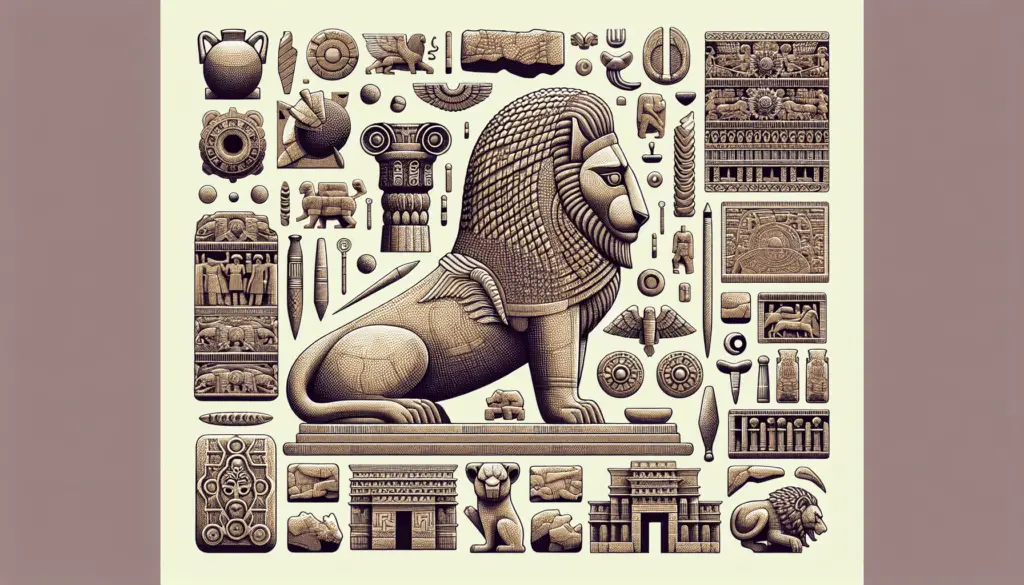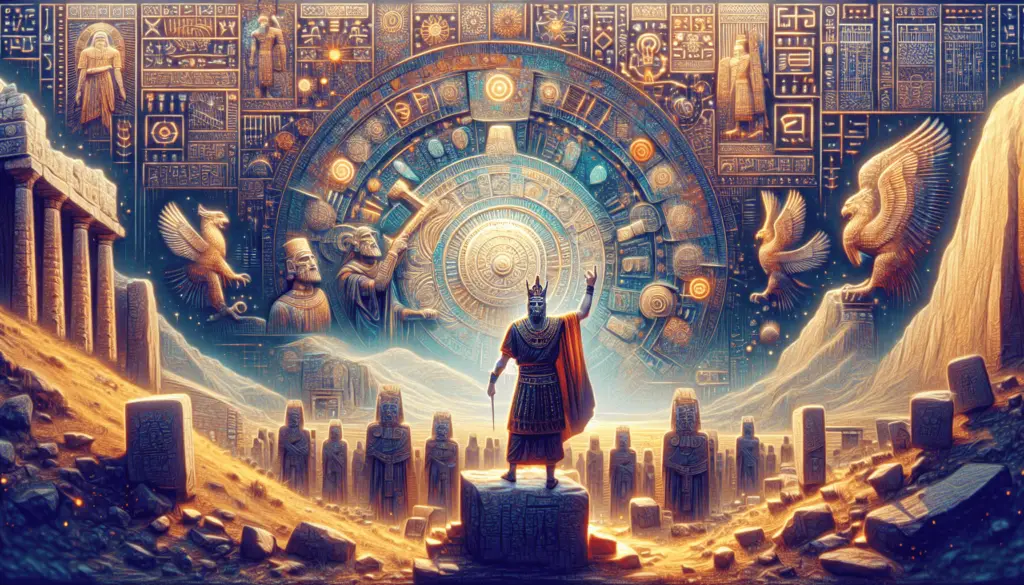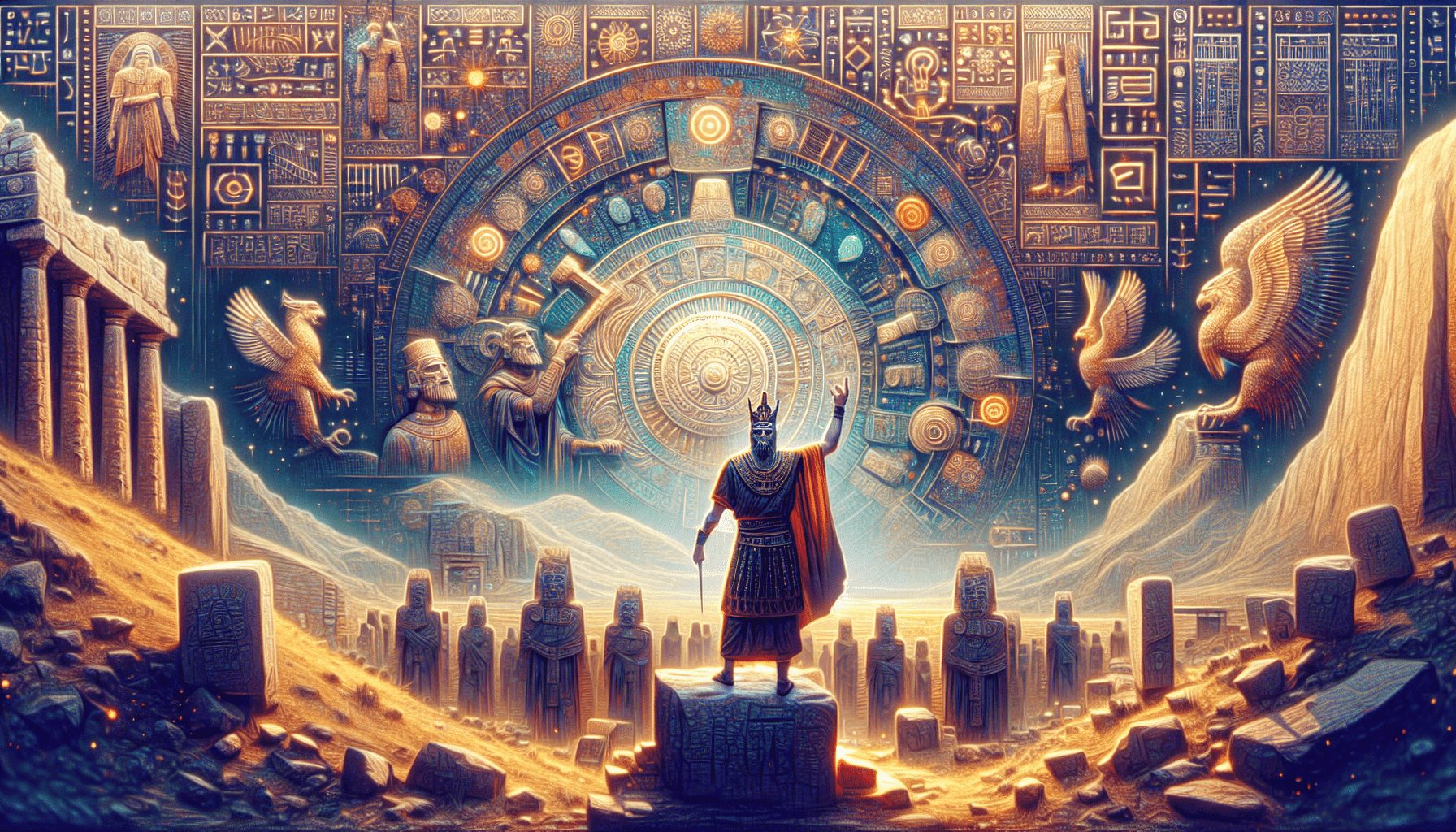Imagine stepping back in time and uncovering the fascinating history of the Hittites, an ancient civilization that once thrived in what is now modern-day Turkey. From their advanced architectural achievements to their strategic military tactics, the Hittites left behind a remarkable legacy that continues to captivate historians and archaeologists alike. Join us on a journey as we explore the rich heritage of the Hittites in Turkey, delving into their monumental ruins and deciphering the secrets of this long-lost civilization.
History of the Hittites
The rise of the Hittite Empire
The Hittites, an ancient Anatolian civilization, rose to power during the late Bronze Age. They established their empire in the central Anatolian region, with their capital situated at Hattusa. The exact origins of the Hittites remain somewhat uncertain, but it is believed that they migrated from the Caucasus Mountains and gradually assimilated with the local Hatti population. Around the 17th century BCE, under the leadership of Hattusili I, the Hittites began to exert their influence and expanded their territorial control.
Hittite expansion and territorial control
During the reign of Suppiluliuma I, the Hittite Empire experienced its greatest period of expansion. Suppiluliuma I conquered various neighboring states, including the powerful Mitanni Empire, and extended Hittite control over vast regions of Anatolia, Syria, and Mesopotamia. The Hittite Empire became a major political player in the ancient Near East, establishing strong alliances and engaging in diplomatic relations with other empires such as Egypt and Assyria.
Key Hittite rulers and their accomplishments
Several key rulers shaped the course of Hittite history and left a lasting impact on their civilization. One prominent figure was King Mursili I, who successfully repelled an invasion by the Hurrians and strengthened Hittite control over northern Syria. Another notable ruler was King Tudhaliya IV, who initiated significant building projects and fostered cultural development within the empire. However, perhaps the most famous Hittite ruler was King Suppiluliuma I, whose conquests and diplomatic prowess solidified the Hittite Empire as a regional power of great significance.
Hittite Architecture and Engineering
Impressive Hittite fortifications and city walls
The Hittites were renowned for their impressive fortifications and city walls, which served as defensive structures to protect their cities and territories. One remarkable example is the city of Hattusa, where gigantic stone walls were constructed, some of which still stand today. These walls were made using sophisticated techniques, utilizing massive limestone blocks that were carefully cut and arranged to withstand attacks and ensure the safety of the city’s inhabitants.
Monumental Hittite temples and palaces
Hittite architecture also showcased monumental temples and palaces that were symbols of their religious and political power. The Temple of Yazılıkaya, situated near Hattusa, stands out as a remarkable example of Hittite religious architecture. Carved directly into the natural rock, this sanctuary features an impressive array of meticulously crafted reliefs depicting Hittite deities and mythical figures. The Great Palace in Hattusa was another grand structure, comprising numerous rooms, courtyards, and elaborate decorations that showcased the wealth and splendor of the Hittite civilization.
Advancements in Hittite engineering and construction techniques
The Hittites were pioneers in engineering and construction techniques, developing innovative methods to create sturdy and enduring structures. They were among the first civilizations to employ arches and vaults in their architecture, which provided increased stability and allowed for the creation of larger and more elaborate buildings. The Hittites also utilized advanced tools and materials, such as bronze and Iron Age iron, to enhance their construction capabilities. These advancements in engineering contributed to the longevity and grandeur of Hittite architecture.

Hittite Art and Craftsmanship
Hittite metalwork and jewelry
The Hittites were skilled metalworkers and produced exquisite jewelry and metal artifacts. They worked with various metals, including gold, silver, and bronze, creating intricate designs and incorporating precious stones. Hittite jewelry often featured symbolic motifs such as lions, bulls, and sun disks, reflecting their religious beliefs and cultural traditions. These metalwork creations showcased the Hittites’ craftsmanship and their appreciation for fine artistry.
Hittite pottery and ceramics
Hittite pottery and ceramics are renowned for their distinctive styles and techniques. Hittite potters crafted vessels and containers using a variety of shapes and forms, ranging from practical storage jars to ornamental vessels adorned with intricate patterns and motifs. They employed various techniques such as wheel throwing, slip decoration, and burnishing to achieve unique and visually appealing designs. Hittite ceramics served both functional and aesthetic purposes, providing valuable insights into their daily life and artistic expression.
Hittite sculpture and relief carvings
Hittite sculpture and relief carvings were prominent forms of artistic expression within their culture. Sculptures and reliefs often depicted gods, rulers, and mythological figures, showcasing the Hittites’ religious beliefs and historical events. The Sphinx Gate in Hattusa, adorned with impressive sphinxes and reliefs of lions and gods, is a remarkable example of Hittite sculpture. These stone carvings were meticulously crafted, capturing intricate details and conveying a sense of power and authority.
Religion and Mythology of the Hittites
Hittite gods and their importance
The Hittites had a complex belief system centered around a pantheon of gods. Their religion incorporated both indigenous Anatolian deities and gods adopted from neighboring civilizations. Among the most significant Hittite gods were the storm god Tarhunt, the sun goddess Arinna, and the weather god Teshub. These gods played crucial roles in Hittite mythology and were honored through elaborate rituals and ceremonies. The Hittites believed that maintaining favorable relations with the gods was essential for the prosperity and well-being of their empire.
The Hittite pantheon and religious rituals
The Hittite pantheon consisted of numerous gods and goddesses, each associated with specific domains and aspects of life. Rituals and religious practices were integral to Hittite society, performed by priests and priestesses in temples and sanctuaries. These rituals involved offerings, sacrifices, and prayers to appease and communicate with the gods. Festivals and processions were also held to honor the deities and celebrate significant events. Religion played a significant role in all aspects of Hittite life, from governance to agriculture.
Mythological tales from Hittite culture
The Hittites had a rich mythological tradition, with many tales and legends passed down through oral and written sources. These myths often depicted interactions between gods and humans, revealing insights into Hittite beliefs and values. One well-known myth is the story of the Storm God’s abduction of the goddess Inara. This myth highlights themes of power, love, and deception and provides a glimpse into the complex narratives woven into the fabric of Hittite culture. Such mythological tales provided entertainment, moral lessons, and a sense of cultural identity for the Hittite people.

Hittite Language and Writing
The Hittite language and its characteristics
The Hittite language belonged to the Anatolian branch of the Indo-European language family. It was primarily written in a script referred to as cuneiform, using clay tablets as the medium for inscription. The Hittite language had its unique grammatical structure and vocabulary, with influences from other languages such as Akkadian and Hurrian. The surviving texts in Hittite provide valuable insights into various aspects of Hittite society, including law, history, religion, and literature.
The development and decipherment of Hittite hieroglyphics
In addition to the cuneiform script, the Hittites also used hieroglyphic writing. The decipherment of Hittite hieroglyphics was a significant achievement in the field of linguistics and archaeology. It was largely due to the efforts of scholars such as Bedřich Hrozný and Egyptologist Alan Gardiner that Hittite hieroglyphics were successfully deciphered in the early 20th century. This breakthrough enabled a deeper understanding of the Hittite civilization and its cultural and historical significance.
Literature and texts written in Hittite
Hittite literature and texts encompassed a wide range of genres, including myths, epic tales, prayers, hymns, and rituals. These texts shed light on various aspects of Hittite society, such as their religious beliefs, laws, and customs. The Hittites also produced historical annals and diplomatic correspondence, providing valuable historical records and insights into their political and diplomatic activities. These literary works showcase the Hittite’s intellectual achievements and their contribution to the literary traditions of the ancient world.
Hittite Influence on Anatolian Civilization
Impact of Hittite culture and technology in Anatolia
The Hittite Empire exerted a significant cultural and technological influence on the Anatolian region. Their advanced engineering techniques, including the use of arches and vaults in construction, influenced subsequent civilizations in the area. The Hittites also introduced new agricultural practices, such as the cultivation of grains and the domestication of horses, which revolutionized farming and transportation in Anatolia. Their political institutions and administrative systems also left a lasting impact, shaping the governance and organization of future Anatolian civilizations.
Adoption of Hittite customs and traditions by neighboring civilizations
The Hittites’ cultural influence extended beyond their borders, as neighboring civilizations adopted Hittite customs and traditions. The Mitanni Empire, for example, incorporated Hittite administrative practices and legal systems into their own governance. Other regions, such as northern Syria, embraced Hittite art styles, pottery techniques, and religious practices. The Hittites’ cultural legacy served as a foundation for the development of later Anatolian and Near Eastern civilizations.
Archaeological evidence of Hittite influence
Archaeological excavations throughout Anatolia have provided extensive evidence of Hittite influence in the region. Ruins of Hittite cities, such as Hattusa, have revealed the architectural and engineering achievements of the Hittites. The discovery of Hittite artifacts, such as pottery, jewelry, and inscriptions, further attests to their cultural and artistic impact. The presence of Hittite-influenced structures and artifacts in neighboring regions confirms the wide-reaching influence of the Hittites in Anatolian civilization.
Archaeological Sites and Museums
Exploring the ruins of Hattusa, the Hittite capital
One of the most fascinating archaeological sites associated with the Hittites is Hattusa, the capital of their empire. Located in present-day Turkey, Hattusa is an extensive complex of ruins that provides a glimpse into the grandeur and splendor of the Hittite civilization. Visitors can explore the remains of monumental city walls, temples, palaces, and other structures that once stood as symbols of Hittite power. The archaeological site of Hattusa offers a unique opportunity to immerse oneself in the rich history of the Hittites.
Visiting other significant Hittite archaeological sites in Turkey
In addition to Hattusa, Turkey is home to several other significant Hittite archaeological sites. At Alaca Höyük, visitors can witness the remains of a Hittite settlement and burial ground, providing insights into their daily life and burial practices. The ancient city of Alacahöyük is another remarkable site, known for its impressive city walls, temples, and royal tombs. Other notable Hittite sites include Kuşaklı Höyük, Sapinuwa, and Karatepe-Aslantaş. These archaeological sites offer a fascinating journey into the world of the Hittites and their enduring legacy.
Exhibitions and artifacts related to the Hittites in Turkish museums
Turkish museums house a wealth of artifacts and exhibitions dedicated to the Hittite civilization. The Museum of Anatolian Civilizations in Ankara showcases a remarkable collection of Hittite artifacts, including pottery, sculptures, and jewelry. The archaeological museums in Hattusa and Alacahöyük also feature exhibits focused on the Hittites. These museums provide an opportunity to appreciate the craftsmanship and artistic prowess of the Hittites and gain a deeper understanding of their cultural and historical significance.
Hittite Heritage in Modern Turkey
Hittite motifs in contemporary Turkish art and design
The Hittite legacy continues to inspire contemporary Turkish artists and designers. Hittite motifs, such as the sun disk, lions, and bulls, can be found in various forms of art, including paintings, sculptures, and textiles. These motifs serve as a connection to Turkey’s ancient past and symbolize a sense of cultural pride and identity. The incorporation of Hittite-inspired designs in modern art and design pays homage to the Hittite civilization and ensures their legacy lives on.
Incorporation of Hittite symbols in Turkish tourism and branding
The Hittite heritage has also been incorporated into Turkish tourism and branding efforts. Hittite symbols and imagery are commonly used in promotional materials, logos, and advertisements to attract visitors and emphasize the rich historical and cultural identity of Turkey. This integration of Hittite symbols in tourism promotes awareness and appreciation for the Hittite civilization, while also contributing to the economic development of the region.
Preservation and promotion of Hittite heritage by Turkish authorities
The Turkish authorities recognize the importance of preserving and promoting the Hittite heritage. Efforts are made to protect Hittite archaeological sites and ensure their conservation for future generations. Museums and cultural institutions receive support and funding to carry out research, conservation, and educational initiatives focused on the Hittite civilization. The Turkish government’s commitment to preserving and promoting Hittite heritage highlights the significance of the Hittites in Turkey’s cultural heritage and national identity.
Research and Discoveries
Recent archaeological discoveries related to the Hittites
Archaeological research and excavations continue to uncover new insights into the Hittite civilization. Recent discoveries have shed light on various aspects of Hittite society, including their military strategies, trade networks, and artistic techniques. Excavations in Hattusa have revealed new sections of the city wall, providing a more comprehensive understanding of its defensive structures. Ongoing research and analysis of Hittite texts and inscriptions also contribute to our knowledge of their language, history, and cultural practices.
Ongoing research and excavation projects focusing on the Hittite civilization
Numerous research and excavation projects are currently underway, focusing on different aspects of the Hittite civilization. These projects aim to uncover hidden insights and unravel further mysteries surrounding the Hittites. Archaeologists are exploring lesser-known Hittite sites, such as Karatepe-Aslantaş and Kuşaklı Höyük, to expand our understanding of their influence beyond the capital city of Hattusa. Ongoing studies of Hittite texts and inscriptions also contribute to a deeper exploration of Hittite language and literature.
Contributions of Hittite studies to our understanding of ancient history
The study of the Hittites has made significant contributions to our understanding of ancient history. Their civilization played a pivotal role in shaping the political landscape of the ancient Near East, and by studying the Hittites, historians gain insights into the interactions and power dynamics of this period. Hittite texts and inscriptions have provided valuable information about the languages, customs, and traditions of ancient Anatolia. The Hittites’ influence on subsequent civilizations and their advancements in engineering and artistry have also broadened our knowledge of the ancient world.
Tourism and Cultural Appreciation
Tourist experiences and activities centered around Hittite heritage
Tourists interested in exploring the legacy of the Hittites can engage in various experiences and activities that delve into their rich history. Guided tours of Hittite archaeological sites, such as Hattusa and Alacahöyük, allow visitors to immerse themselves in the ancient civilization. Local museums offer curated exhibitions and informative displays that provide a comprehensive understanding of Hittite culture, art, and daily life. Additionally, cultural festivals and events often celebrate the Hittite heritage through music, dance, and traditional crafts, offering a vibrant and immersive experience for visitors.
Educational programs and workshops on Hittite culture for visitors
Educational programs and workshops catered to visitors ensure a deeper appreciation and understanding of Hittite culture. These programs provide opportunities to learn about Hittite language, art techniques, and traditional craftsmanship. Visitors can engage in hands-on activities, such as pottery making or relief carving, to experience the artistic methods employed by the Hittites. Educational lectures and presentations by experts also offer valuable insights into various aspects of Hittite society, culture, and religious practices.
Importance of cultural preservation and sustainable tourism practices
Preserving the Hittite heritage and practicing sustainable tourism are crucial for the long-term protection of the Hittite archaeological sites and cultural artifacts. Implementing responsible tourism practices ensures that future generations can continue to appreciate and learn from the Hittite civilization’s legacy. It is essential for tourists and local communities to engage in ethical practices, such as respecting archaeological sites, adopting eco-friendly behaviors, and supporting local businesses that contribute to the preservation and promotion of the Hittite heritage. By valuing cultural preservation and sustainable tourism, we can ensure the Hittite legacy endures for centuries to come.

